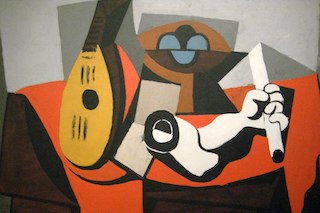Tony and Kurt will report on a study that examined methods for engaging young children in visual literacy instruction. The study was conducted by LIS 630 (Research Design/Methods) students in collaboration with the Brooklyn Public Library. A brief summary is below.
More detailed information can be found on these slides: InfoShow 2017 – Decoding Picasso
Study Goals:
- Getting a feel for children’s existing knowledge of visual literacy concepts
- Seeing how children engage with visual literacy concept instruction
Concepts Covered
Four workshops were given at a branch of the Brooklyn public library in fall 2016. Each covered a different visual literacy concept:
- Lines
- Colors
- Shapes
- Textures
The librarian who recruited participants attended all workshops, along with researcher-instructor, observer/note-taker, and childrens’ guardians. The average number of participants was 11, with ages ranging from 2.5 to 4 years old.
Workshops followed the same format
- Introduction to workshop theme and researchers (1-2 minutes)
- Initial engagement phase aimed at generating interest and measuring knowledge of the workshop concept (5 minutes)
- VL element instruction to introduce new concepts and stimulate critical thinking (10 minutes)
- Activity aimed at reinforcing and assessing knowledge – children created art projects related to the workshop theme
Conclusions
- Most of the children who participated in the study workshops showed a solid baseline knowledge of colors, lines, shapes and textures
- After the instruction, children generally showed an improved understanding of the newly introduced VL concepts by displaying abilities to apply these concepts in art projects, answer questions related to the new concepts and recognize them in study images and their surroundings.
- Some VL concepts (e.g. horizon and perspective lines) proved harder for children to learn.
- However, we would not discourage future VL instructors from including them because harder VL concepts stimulated interest and engagement in children, and
- While discussions about complex concepts might not lead to total comprehension, they prepare children to better understand them at the older age, expand their VL vocabulary and attention
Lessons Learned
- Maximum recommended length for a workshop is about 40 minutes
- Key to success – finding balance between instruction and interaction
- If the emphasis is more on instruction, children may not be as engaged
- If the emphasis is more on interaction and exploration, children may learn less, but have more fun overall
- Having flexible lesson plans that can accommodate varying levels of knowledge is key





1 Comment
1 Pingback